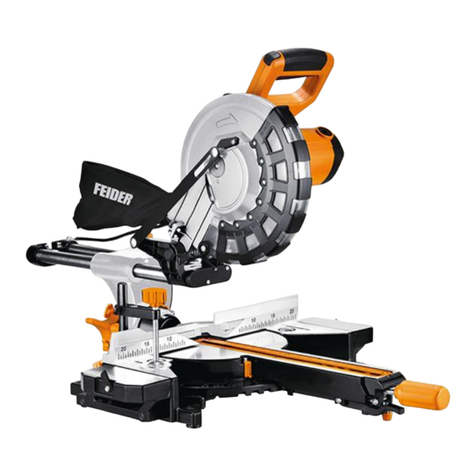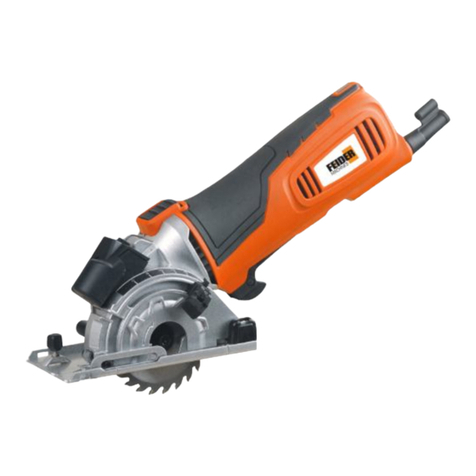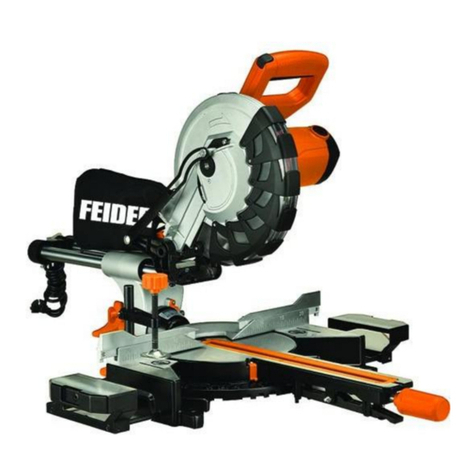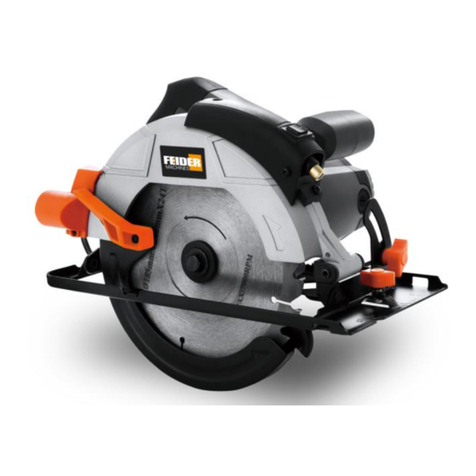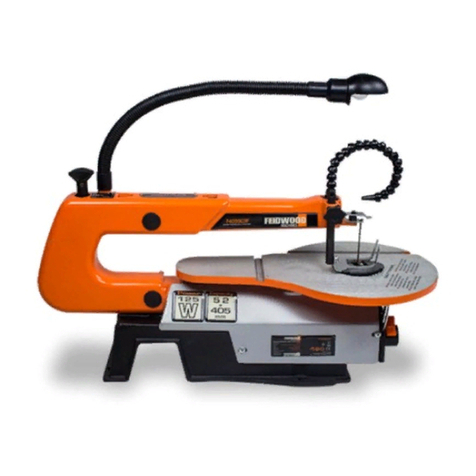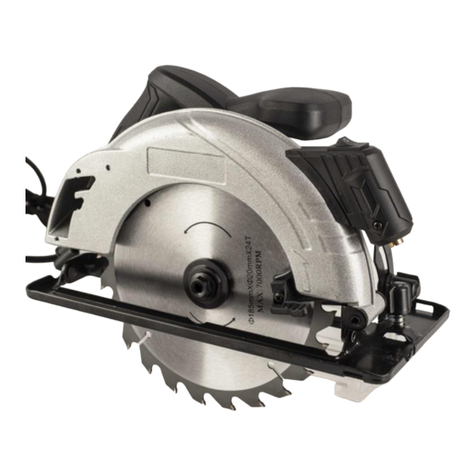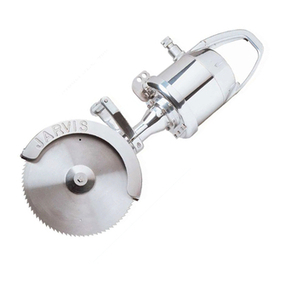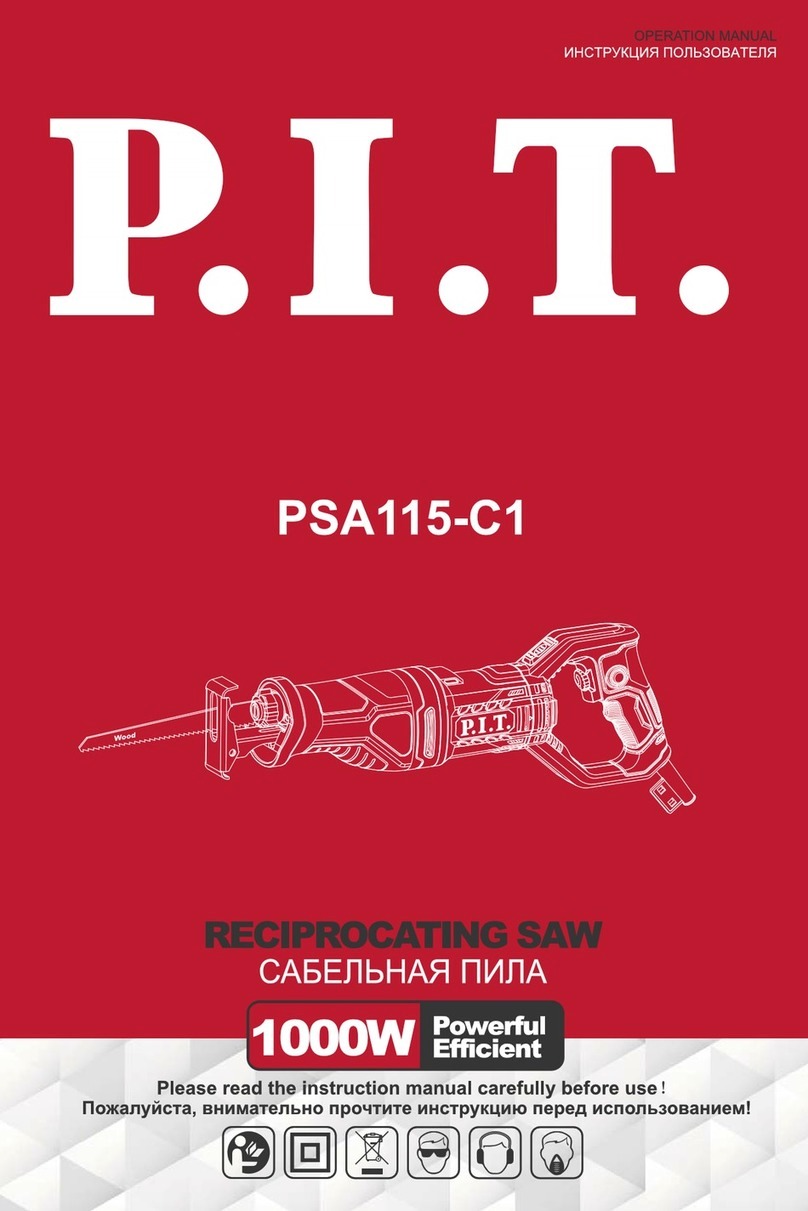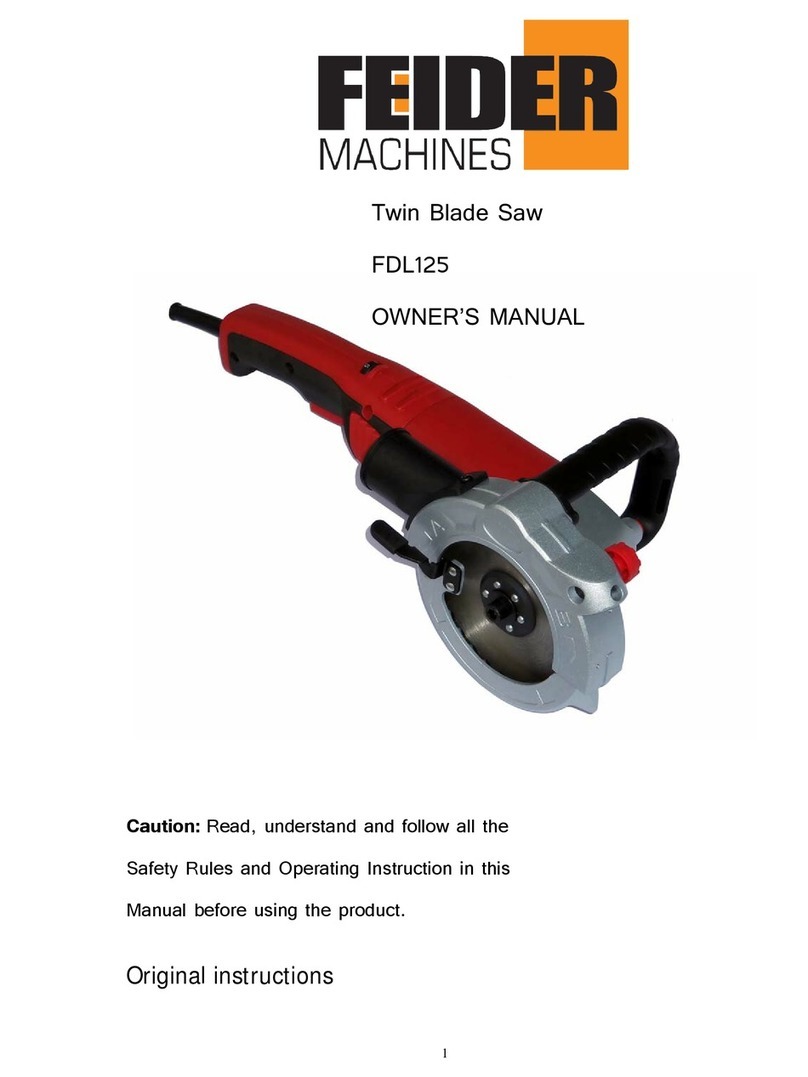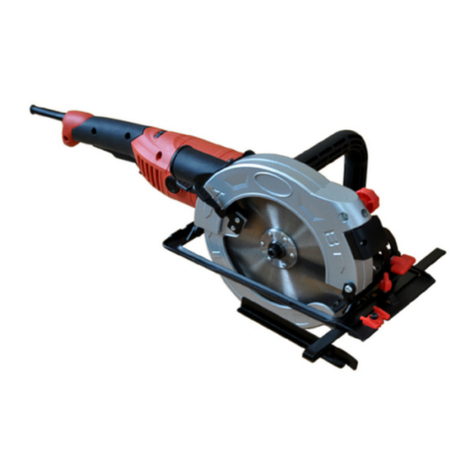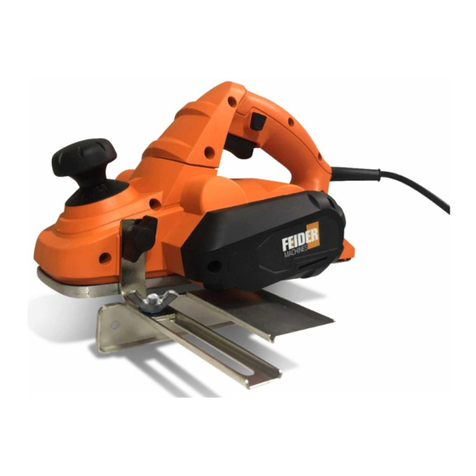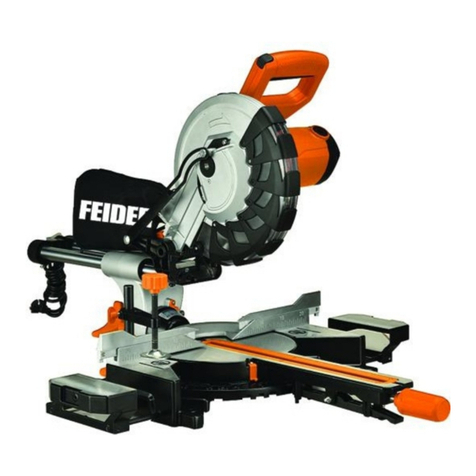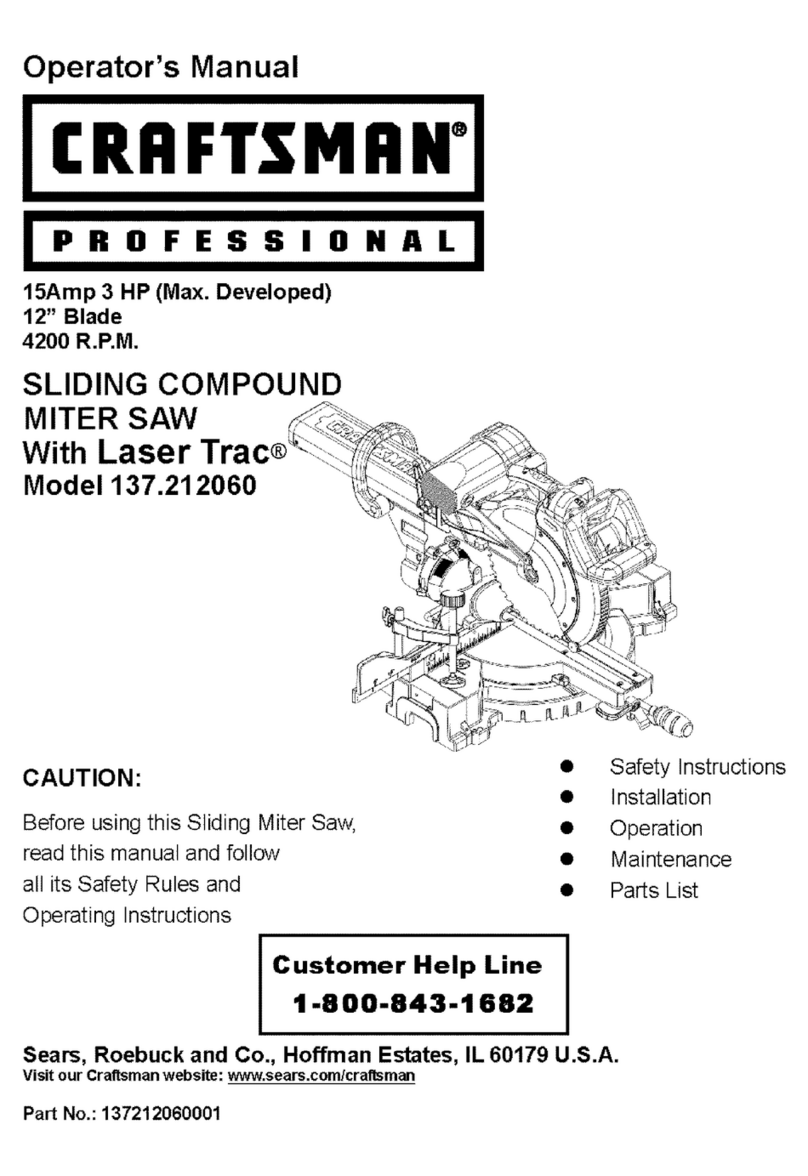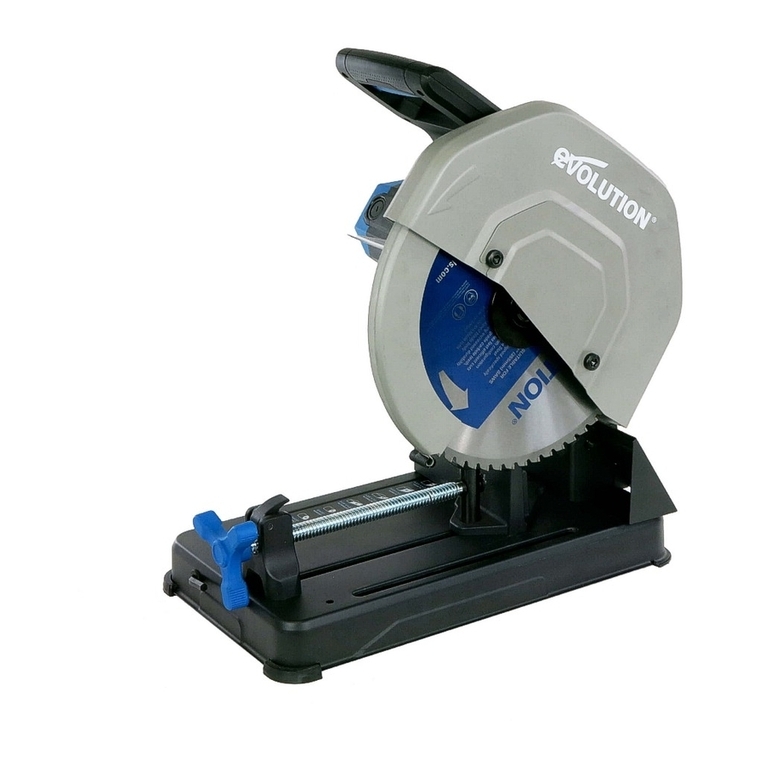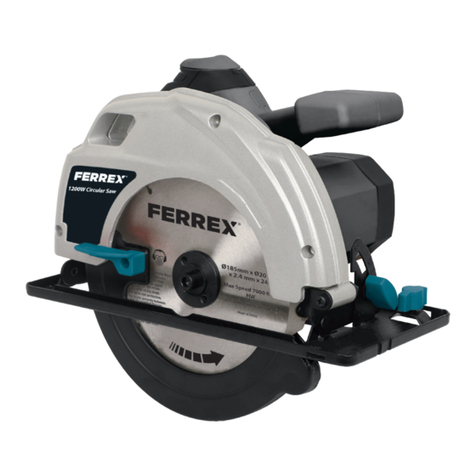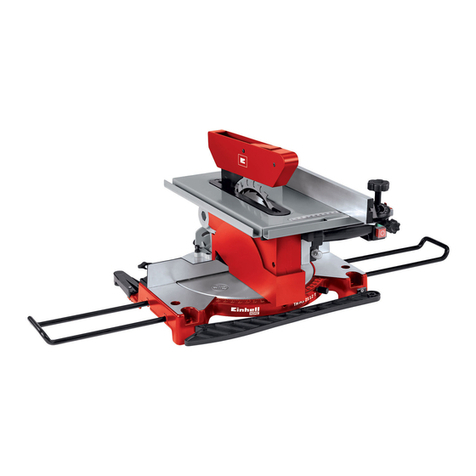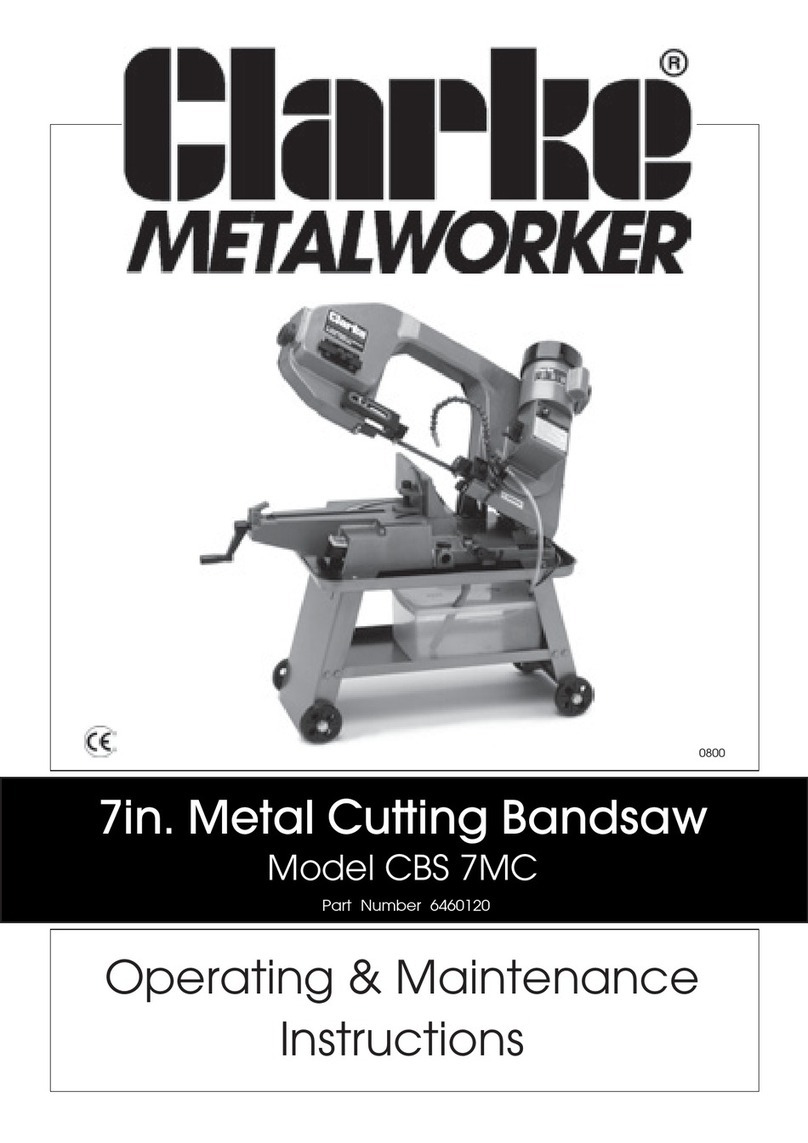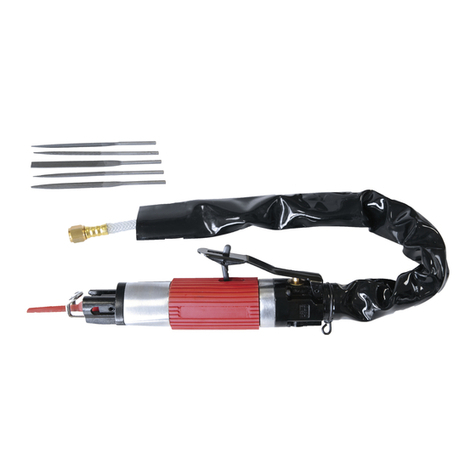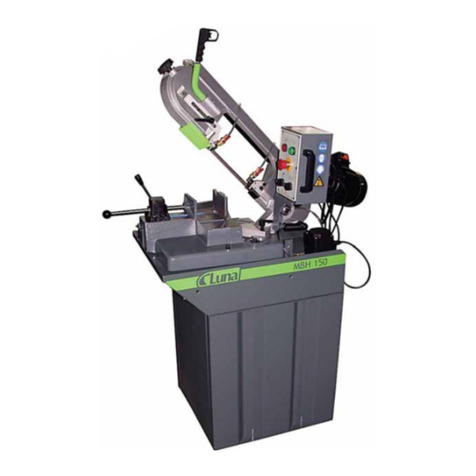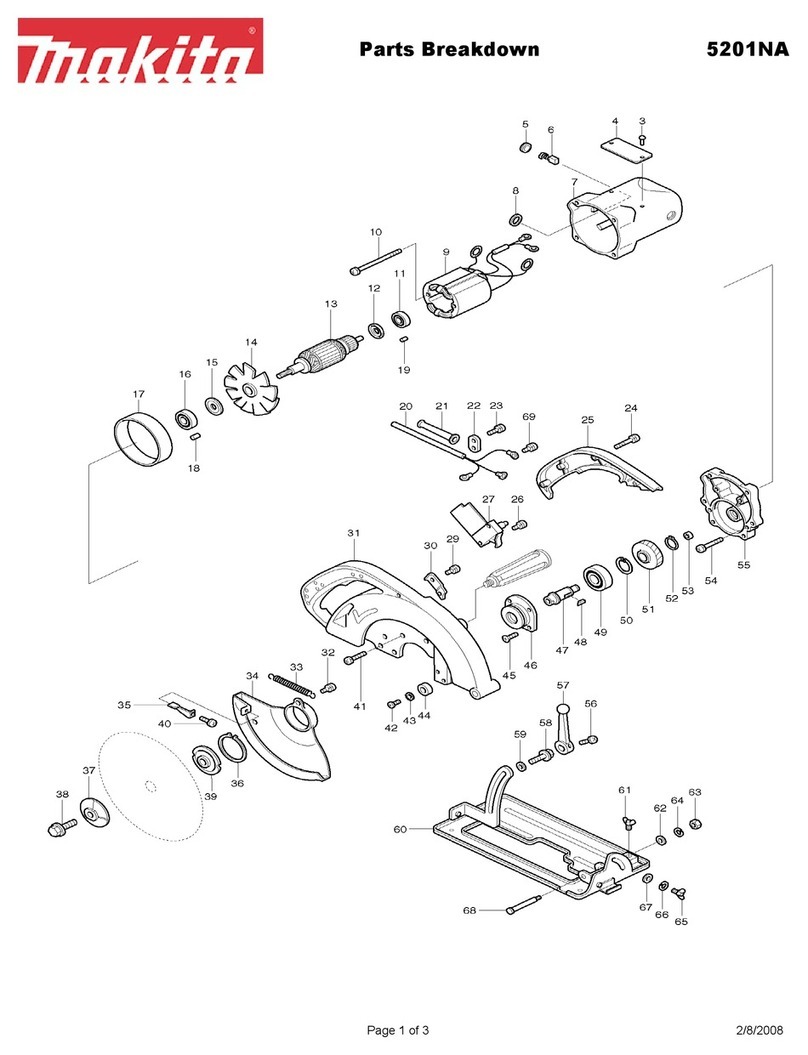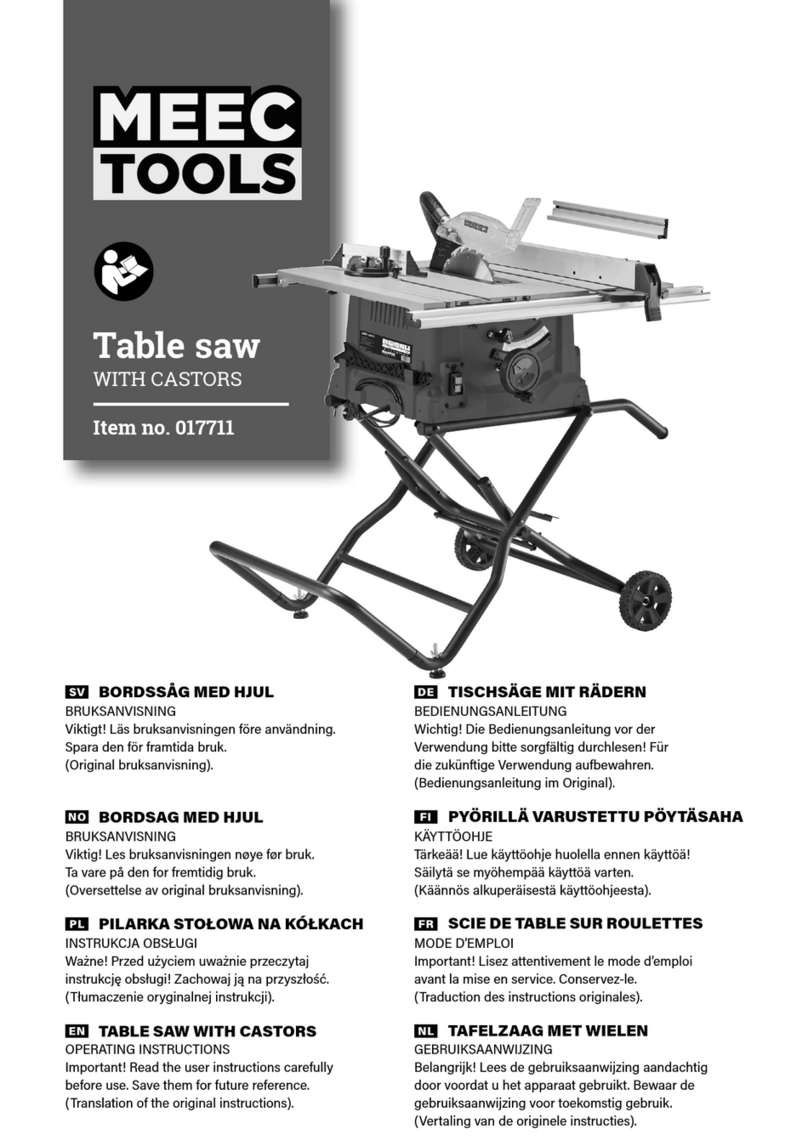jam. Sparks from abrasive cutting will burn the lower
guard, the kerf insert and other plastic parts.
b) Use clamps to support the workpiece
whenever possible. If supporting the workpiece
by hand, you must always keep your hand at
least 100 mm from either side of the saw blade.
Do not use this saw to cut pieces that are too
small to be securely clamped or held by hand. If
your hand is placed too close to the saw blade, there
is an increased risk of injury from blade contact.
c) The workpiece must be stationary and
clamped or held against both the fence and the
table. Do not feed the workpiece into the blade or
cut “freehand” in any way. Unrestrained or moving
workpieces could be thrown at high speeds, causing
injury.
d) Push the saw through the workpiece. Do not
pull the saw through the workpiece. To make a
cut, raise the saw head and pull it out over the
workpiece without cutting, start the motor, press
the saw head down and push the saw through
the workpiece. Cutting on the pull stroke is likely to
cause the saw blade to climb on top of the workpiece
and violently throw the blade assembly towards the
operator.
e) Never cross your hand over the intended line
of cutting either in front or behind the saw blade.
Supporting the workpiece “cross handed” i.e. holding
the workpiece to the right of the saw blade with your
left hand or vice versa is very dangerous.
f) Do not reach behind the fence with either hand
closer than 100 mm from either side of the saw
blade, to remove wood scraps, or for any other
reason while the blade is spinning. The proximity
of the spinning saw blade to your hand may not be
obvious and you may be seriously injured.
g) Inspect your workpiece before cutting. If the
workpiece is bowed or warped, clamp it with the
outside bowed face toward the fence. Always
make certain that there is no gap between the
workpiece, fence and table along the line of the
cut. Bent or warped workpieces can twist or shift and
may cause binding on the spinning saw blade while
cutting. There should be no nails or foreign objects in
the workpiece.
h) Do not use the saw until the table is clear of all
tools, wood scraps, etc., except for the
workpiece. Small debris or loose pieces of wood or
other objects that contact the revolving blade can be
thrown with high speed.
i) Cut only one workpiece at a time. Stacked
multiple workpieces cannot be adequately clamped
or braced and may bind on the blade or shift during
cutting.
j) Ensure the mitre saw is mounted or placed on a
level, firm work surface before use. A level and
firm work surface reduces the risk of the mitre saw
becoming unstable.
k) Plan your work. Every time you change the
bevel or mitre angle setting, make sure the
adjustable fence is set correctly to support the
workpiece and will not interfere workpiece on the
table, move the saw blade through a complete
simulated cut to assure there will be no interference
or danger of cutting the fence.
l) Provide adequate support such as table
extensions, saw horses, etc. for a workpiece that
is wider or longer than the table top.Workpieces
longer or wider than the mitre saw table can tip if not
securely supported. If the cut-off piece or workpiece
tips, it can lift the lower guard or be thrown by the
spinning blade.
m) Do not use another person as a substitute for
a table extension or as additional support.
Unstable support for the workpiece can cause the
blade to bind or the workpiece to shift during the
cutting operation pulling you and the helper into the
spinning blade.
n) The cut-off piece must not be jammed or
pressed by any means against the spinning saw
blade. If confined, i.e. using length stops, the cut-off
piece could get wedged against the blade and
thrown violently.
o) Always use a clamp or a fixture designed to
properly support round material such as rods or
tubing. Rods have a tendency to roll while being cut,
causing the blade to “bite” and pull the work with
your hand into the blade.
p) Let the blade reach full speed before
contacting the workpiece. This will reduce the risk
of the workpiece being thrown.
q) If the workpiece or blade becomes jammed,
turn the mitre saw off. Wait for all moving parts
to stop and disconnect the plug from the power
source and/or remove the battery pack. Then
work to free the jammed material. Continued
sawing with a jammed workpiece could cause loss of
control or damage to the mitre saw.
r) After finishing the cut, release the switch, hold
the saw head down and wait for the blade to stop
before removing the cut-off piece. Reaching with
your hand near the coasting blade is dangerous.
s) Hold the handle firmly when making an
incomplete cut or when releasing the switch
before the saw head is completely in the down
position. The braking action of the saw may cause
the saw head to be suddenly pulled downward,
causing a risk of injury.
Use only a saw blade diameter in accordance with
the markings on the saw and information about the
bore diameter and the maximum kerf of the saw
blade.














